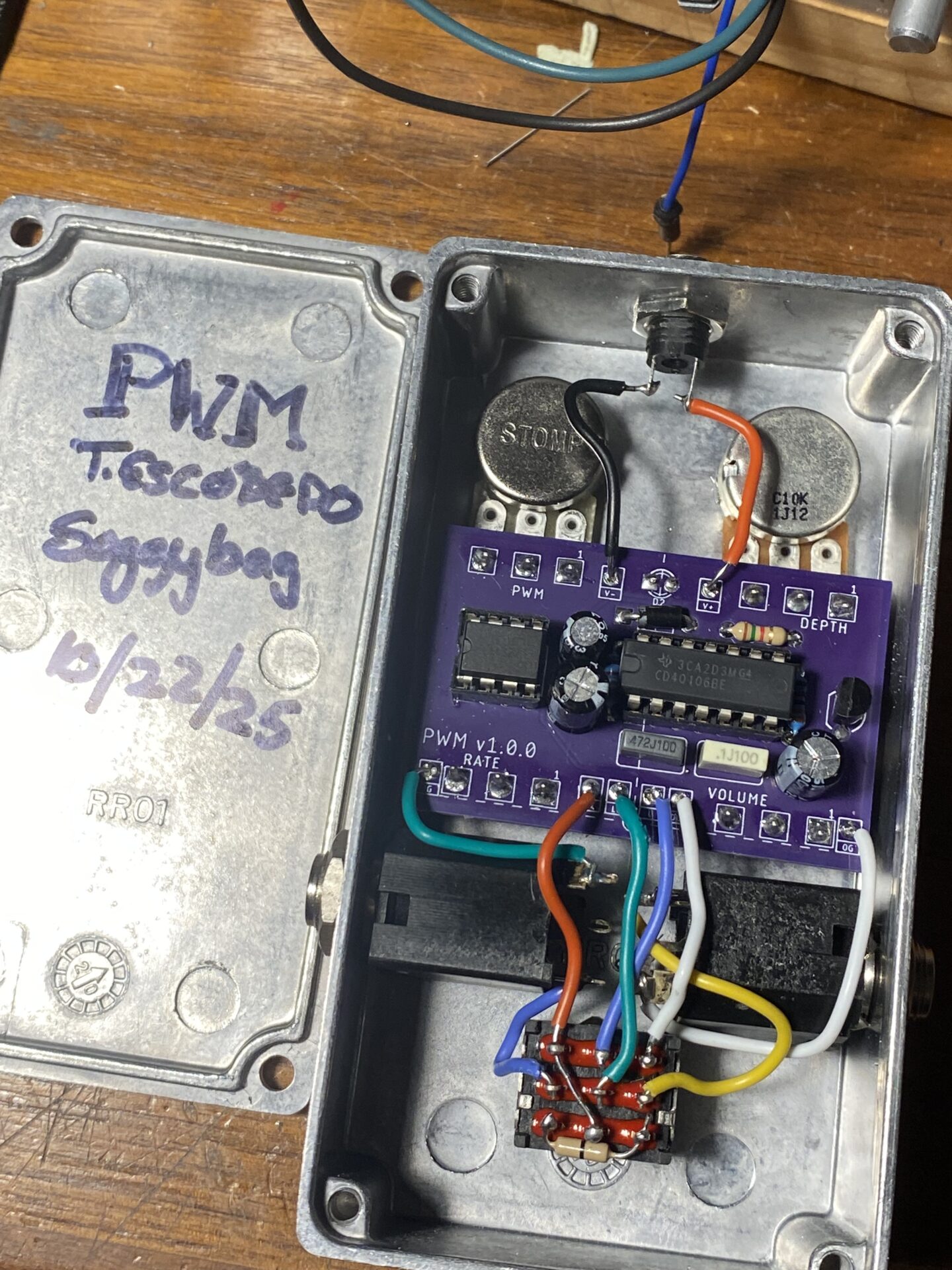I wonder what happened to Tim Escobedo? The author of Circuit Snippets, a page with a lot of great ideas for guitar effects. The site is no longer active, but it has been archived in a few places; here is a link. If you haven’t explored Circuit Snippets, you should take a look.
The ideas are bare bones, in a good way. It seemed like Tim tested all of these at least on a breadboard. He was active on the diystompboxes forum for years, then disappeared. I get the impression he moved on to other interests.
PWM
Is a simple pedal that turns your input signal into a pulse-width adjustable square wave. Here is a schematic I made from the original.

Using a signature Tim Escobedo LM386 input buffer, with the gain pegged at 200. The input drives a 40106 Schmitt trigger to turn that into a square wave. The PWM pot sets the width of the pulse.
What makes this more interesting is the suggestion of using one of the unused Schmitt triggers as an LFO to drive width. It’s shown in a box to the side of the original schematic. This adds some motion to the sound, which contributes significantly to the overall effect.
I had not built this until more recently since the Ugly Face seemed so much better. I still think the Ugly Face is better, but this has some mojo of its own.
Making a PCB
I designed this PCB using Eagle PCB (one day, I’m going to move over to KiCad). I had the boards manufactured using PCBWay.com. This service is very good; I’ve used them often, shipping is quick, and prices are very competitive. They also have a plugin for KiCad.
Many of the guitar effectors I’ve posted here are shared projects available on PCBWay.com. You can order them for yourself and follow the build guides here!
I built a previous version of this board that fit a 1590BB. This new board was designed to fit a 1590B. For the larger build, I added a footswitch to activate the LFO. In this build, the LFO is always on. You can turn the depth down to eliminate the effect. I thought it might be a better arrangement since the LFO is what makes the sound of this interesting; I’d want to have this on all the time!




I had this enclosure with a wave pattern.

I’m running out of parts. I only have one of these smaller, low-profile stomp switches left over. I don’t really like these. The stop of the plunger is only as tall as the pots. I feel like you might move one or more of the knobs while stepping on the switch.

I got everything wired up and it worked the first time! I love it when that happens!




How does it sound?
Like an extremely compressed fuzz at max gain. The circuit turns the input into a square wave and controls the width of the waveform. The Rate and Depth controls animate the width of the waveform, which gives the sound some motion. Single notes sound like the square wave of a synthesizer. Chords sound really distorted and beyond fuzz. It is fun to play with! It could get you some annoyed looks from your other band members, depending on the context. It might be just the thing for that noise rock set at that club in Tokyo; just don’t play it on every song; it’s best used in moderation.
Here is a demo of an earlier build of this same pedal.
Should you build it?
Are you looking for a cheap and easy way to add some synthy tones to your sound? If so, this could be your ticket! It’s definitely a one-trick pony, but the trick is unique.

Leave a Reply